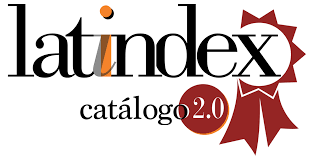Historia y avances en la investigación en comunicación organizacional/History and advances in communication organizational research
DOI:
https://doi.org/10.5783/revrrpp.v5i10.339Keywords:
investigación en comunicación, comunicación organizacional, tendencias en comunicación organizacional, comunicación en las organizaciones, campo de la comunicaciónAbstract
Este artículo expone cuál ha sido el recorrido de la investigación en comunicación organizacional desde el siglo XX hasta la segunda década del siglo XXI. Busca evidenciar vacíos existentes en la investigación publicada, entre ellos, la ausencia de investigaciones que se aborden desde perspectivas multi paradigmáticas o desde enfoques que integren diferentes visiones. Para ello, se hizo la revisión de estudios bibliométricos e informétricos publicados en los últimos años (2010 – 2014), así como aquellos que datan desde mitad del siglo XX, periodo desde donde se dio comienzo a las publicaciones sobre este campo de estudio. Se concluye respecto a la necesidad de nuevos estudios que demuestren mayor contraste en temáticas, teorías, métodos, objetos de estudio e incluso, aquellos que evidencien cómo las organizaciones están apropiando las tendencias de la comunicación en el diseño de sus procesos y estrategias de comunicación.
Downloads
References
Allen, B., & Tompkins, P. (1996). Organizational Communication. En M. Salwen, & D. W. Stacks, An Integrated Approach to Communication Theory and Research (págs. 383-395). Mahwah: Lawrence Erlbaum Associates, Inc. Publishers.
Angel, A. (24 de May de 2012). The “Fields” of Organizational Communication Field: Latin American and North American Perspectives. Paper presented at the annual meeting of the International Communication Association.
Bouzon, A. (1 de Septiembre de 2011). Las investigaciones en comunicación de las }organizaciones: orígenes y fundamentos. Organicom, 8(14), 13-28.
Buzzanell, P., & Stohl, C. (1999). The Redding tradition of organizational communication scholarship: W. Charles Redding and His Legacy. Communication Studies, 50(4), 324-336.
Castillo E., A., Almansa, A., & Álvarez, A. (2012). Investigación latinoamericana en comunicación: estudio bibliométrico de revistas científicas. Revista Latinoamericana de Ciencias de la Comunicación, 9(16), 149-158.
Castillo, A., & Carretón, M. C. (2010). Investigación en Comunicación. Estudio bibliométrico de las Revistas de Comunicación en España. Comunicación y Sociedad, XXIII(2), 289-327.
De Velasco M., A. (2009). Escuelas del Comportamiento Organizacional. En C. Fernández, Comunicación en las Organizaciones (págs. 18-46). México: Trillas.
Doerfel, M., & Gibbs, J. (2014). Fiel Research. En L. &. Putnam, The Sage Handbook of Organizational Communication. Advances in Theory, Research and Methods (págs. 223-243). California: SAGE.
Donsbach, W. (2012). The Identity of Communication Research. Signo y pensamiento, 30(60), 18-29.
Fernández P., E. (2007). Revistas del Journal Citation Reports sobre Comunicación. Zer(23), 11-33.
Fernández R., C. (12 de 06 de 2014). Una introducción a los Critical Management Studies. Obtenido de Facultad de Ciencias Económicas, Universidad de Buenos Aires: http://www.econ.uba.ar/www/institutos/epistemologia/marco_archivos/ponencias/Actas%20XIII/Trabajos%20Episte/Fernandez%20Rodriguez_%20trabajo.pdf
Godhaber, G. (1989). Comunicación Organizacional . México: Diana.
Jablin, F., & Putnam, L. (2001). The new handbook of organizational communication: advances in theory, research, and methods. Thousand Oaks, California: Sage Publications, Inc.
Jones, E., Watson, B., Gardner, J., & Gallois, C. (2004). Organizational Communication: Challenges for the New Century. Journal of Communication, 54(4), 722–750.
Krohling K., M. (2006). Auditoria de la Comunicación . En M. A. Rebeil, Comunicación Estratégica en las Organizaciones (págs. 185-190). México: Trillas.
Mumby, D., & Putnam, L. (2014). Introduction: Advancing Theory and Research in Organizational Communication. En L. Putnam, & D. Mumby, The SAGE Handbook of Organizational Communication. Advances in Theory, Research, and Methods (págs. 1-18). California: Sage.
Myers, K. (2014). Mixed Methods. En L. Putnam, & D. Mumby, The SAGE Handbook of Organizational Communication. Advances in Theory, Research, and Methods (págs. 297-320). Los Angeles: SAGE.
Putnam, L., & Cheney, G. (2006). Historical Development and Future Directions. En L. Putnam, & K. Krone, Organizational Communication. California: SAGE Publications Ltd.
Ramírez de A., L. (2014). La comunicación como trama in-visible de sentidos de y en las organizaciones. Revista Poliantea, 10(18), 205-224.
Redding, C. (1972). Communication within the organization: An interpretative review of theory and reseach. New York: Industrial Communication Council, Inc.
Roethlisberger, F. (1945). The Foreman: Master and victim of double talk. Harvard Business Review, 23(3), 283-298.
Roncallo-Dow, S., Uribe-Jongbloed, E., & Calderón- Reyes, I. ( Enero-Junio de 2013). La investigación en comunicación: Los límites y limitantes del conocimiento. Co-herencia, 161-187.
Saladrigas Medina, H. (2005). Comunicación organizacional: Matrices teóricas y enfoques comunicativos. Revista Latina de Comunicación Social(60).
Stacks, D. W. (1974). Organizational Communication: a survey of publications. Journal of Applied Communications Research, 67-74.
Van Riel, C. (1997). Comunicación Corporativa. Madrid, España: Prentice Hall.
Vidales G., C. (2015). Historia, teoría e investigación de la comunicación. Comunicación y Sociedad(23), 11-43.
Downloads
Published
How to Cite
Issue
Section
License
Authors publishing in this journal agree to the following terms:
a. Authors retain copyright and grant the journal the right to be the first publication of the work as licensed under a Creative Commons Attribution License that allows others to share the work with an acknowledgement of authorship of the work and initial publication in this journal.
b. Authors may separately enter into additional arrangements for non-exclusive distribution of the version of the work published in the journal (e.g., placing it in an institutional repository or publishing it in a book), with an acknowledgement of initial publication in this journal.
c. Authors are allowed and encouraged to disseminate their work electronically (e.g. in institutional repositories or on their own website) before and during the submission process, as it can lead to productive exchanges, as well as earlier and higher citation of published work (see The Effect of Open Access).




